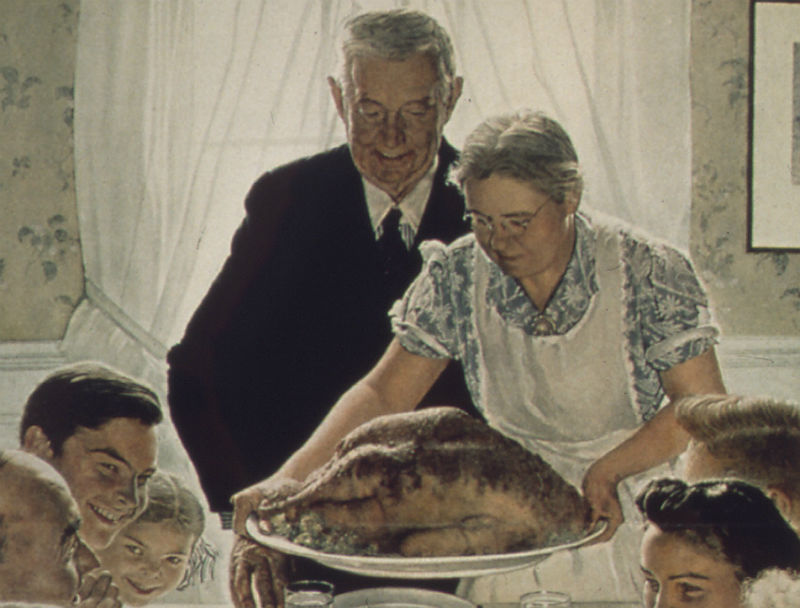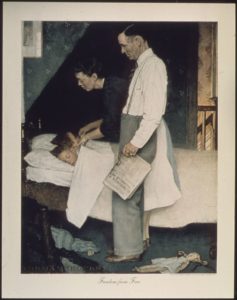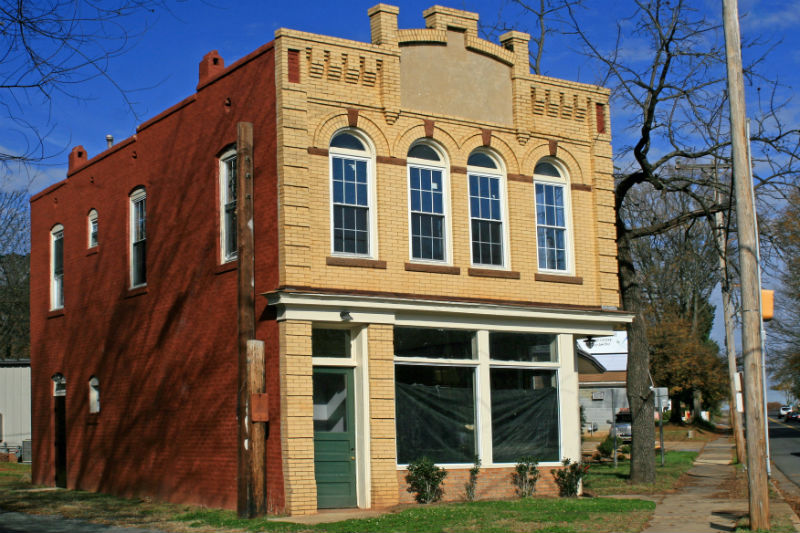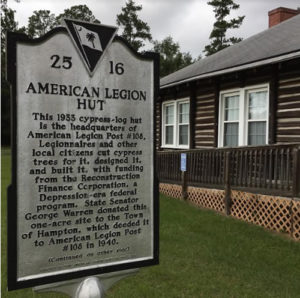INSIDE ISSUE 17.25 | June 22, 2018
NEWS: S.C. worker shortage in hospitality nears ‘crisis stage,’ experts say
NEWS BRIEFS: Riley honored, border politics and metro economic impact
CALENDAR: Budget, tax conformity, utility reform and runoffs are ahead
COMMENTARY, Brack: Don’t be so gullible as to let your freedoms slip away
SPOTLIGHT: Francis Marion University
MY TURN, Rhodes: More waste comes to Savannah River Site?
FEEDBACK: Write a letter to the editor
MYSTERY PHOTO: Where’s this tan building
S.C. ENCYCLOPEDIA: Carolina Day recalls the Battle of Sullivan’s Island
NEWS
S.C. worker shortage in hospitality nears ‘crisis stage,’ experts say

By Lindsay Street, Statehouse correspondent | A tightening labor pool and declining wages could spell trouble for one of the state’s biggest economic engines: hospitality.
“It’s almost in a crisis stage that we can’t fill all of the positions available,” said Linn Lesesne, co-owner of Charming Inns, a small business comprising four inns and two restaurants in Charleston. “We’re constantly looking for front desk and housekeeping and line cooks, we always have positions available.”
Lesesne isn’t alone. In fact, in her role as chair of the Charleston Convention and Visitors Bureau’s board of governors, she spoke Wednesday on this topic to other hospitality business owners.
“Everybody across the city is feeling it,” she said, adding one of her restaurants has seven job openings. “The Convention and Visitors Bureau has been in the business of marketing the city and now we are recognizing there is so much more to that … We can build beautiful hotels but if we don’t have staff that are friendly and genuine and willing to work hard, then those places are not going to succeed and the city’s not going to succeed.”
The problem
Worker shortages are happening across industries in the state, from the public sector to manufacturing.
In April, South Carolina’s jobless rate declined to 4.0 percent from 4.2 percent the previous month — meaning 5,431 people found more jobs, according to recent numbers from the S.C. Department of Employment and Workforce. But the number of people in the workforce also declined overall by 5,431.
“We can complain about (the tight labor force) but it’s kind of like complaining about it being hot in Charleston. It’s kind of how things are,” said Calvin Blackwell, chair of College of Charleston’s Department of Economics.
Blackwell said there is a cure for any industry struggling to recruit and retain: better incentives, including paying workers more.
The wage issue
Blackwell fingered low wages as an issue adding to worker-shortage woes for hospitality.
Hospitality workers are among those being paid less than 10 years prior when adjusted for inflation, according to a DEW 2017 report. In January 2007, the average private-service providing industry earnings was reported at $19.16 per hour. In June 2017, the average wage was $18.23 per hour.
As wages declined, the demand for workers has increased. State data show the hospitality workforce grew by 9.5 percent in 2014-2015 and 8.2 percent in 2015-2016, placing the industry among the top in growth in the state.
Blackwell said in comparison to other sectors, hospitality wages “tend to be fairly low.” He cited a $12.50 per hour wage for cooks in Charleston. Data from the Charleston Regional Development Alliance found the average hourly wage in 2016 was $10.75 for food preparation and serving-related occupations — the lowest among all occupations listed.
“In a well-functioning market, we would expect a (worker) shortage to be addressed by a price increase, but that price increase is happening pretty minimally at this point,” Blackwell said. “Incentives matter here and so my advice to the industry is if you’re having trouble finding people you’re going to have to provide more incentives for them to come work for you … That’s what happens when you have a tight labor market.”
Assuming the worker is full-time at 40 hours per week at $10.75 an hour and takes two weeks of vacation, that amounts to $21,500 per year before taxes. That is less than 200 percent of the federal poverty level for a single person. In Charleston County, for example, that would leave about $500 a month for living expenses after renting a one- or two-bedroom home for about $1,200.
Lesesne agreed wages are an issue for recruiting and retaining employees.
“It’s on top of mind,” she said. “Charleston is not an inexpensive place to live.”
But economists and business owners alike agree: wages aren’t the only solution.
More solutions on horizon

Lesesne said one way the Charleston Visitors and Convention Bureau has helped alleviate the crisis has been with regional job fairs, which offer jobs where people work.
Two other “out-of-the-box” solutions in the works have included reaching out to former residents of OneEighty Place, a homeless shelter in the Charleston area, and to veterans , and the region partnering with local governments to provide parking and transportation for workers, Lesesne said.
“We are headed in the right direction,” Lesesne said. “We’re coming up with solutions; they’re just a work in progress.”
Other perks, like health insurance, can also draw employees back to the industry, Blackwell said.
‘Keeping employees happy’
In Columbia, University of South Carolina School of Hotel Restaurant and Tourism Management Director Drew Martin is conducting research on hospitality worker recruitment and retainment and he said a different kind of incentive could help.
“I have a working hypothesis that the key to attracting and retaining employees for these positions requires building a culture of shared values,” Martin said. “Basically, people want to feel important and recognized for their accomplishments.”
Martin said his research piggybacks off of research from nearly 100 years ago in the 1920s and 1930s that showed employees performed better when they have a more-friendly work environment.
“Keeping employees happy is far better than training new people,” Martin said. He said that the Association of Talent Development estimates small businesses spend nearly $1,900 on training per new employee.
A friendly corporate culture is important to Lesesne and her employee retention.
“We care about our employees. We make sure nobody misses award day at school. Family comes first,” she said, adding she knows all of her employees’ names and is on a friendly basis with them.
Martin said businesses like Lesesne’s will have to continue to add more solutions to stave off a worsening crisis.
“Paying people more would be nice, but this option is not always possible,” Martin said. “(However) I still argue that paying a bit more for quality help probably is better than alienating customers and ruining the business’s reputation.”
- Have a comment? Send to: feedback@statehousereport.com
NEWS BRIEFS
Riley honored, border politics and metro economic impact
Staff reports | Greenville native Richard W. “Dick” Riley, who served as S.C. governor and the nation’s longest-serving secretary of education, will be memorialized in sculpture by the city of Greenville.

A Greenville committee is working with noted sculptor Zan Wells to create an appropriate design, which portrays Riley reading a book to two children. A location has not been officially designated.
Riley became known as South Carolina’s “Education Governor” during two terms that started in 1979 With the involvement of 13,000 educators, parents, and business and community leaders, he led the state to enact the Education Improvement Act of 1984, which is considered one of the most comprehensive and successful education-reform packages in America.
Riley also is the longest-serving U.S. Secretary of Education in the nation’s history, with a full eight-year tenure during the presidency of Bill Clinton. Riley worked to raise academic standards for all children; support teachers; increase aid for students going to college; make the internet available to the nation’s public schools and libraries; and provide for quality afterschool programs.
Riley grew up in Greenville, graduating from Greenville High School and Furman. After military service as an officer on a minesweeper in the U.S. Navy, he graduated from the University of South Carolina School of Law.
Tax-deductible donations may be sent to the Community Foundation of Greenville, Riley Sculpture Fund, at 630 East Washington Street, Greenville S.C., 29601, or made online here.
In other recent news:
Mayors at the border. Columbia Mayor Steve Benjamin led a coalition of mayors from across the country to a Texas-Mexico border town of Tornillo June 28 to protest the Trump administration policy that separated illegal immigrant parents from their children. While the policy was reversed as Benjamin and other mayors traveled, Benjamin live-tweeted his experience at the border using the hashtag #MayorsStand4All and saying he was “Fighting for the Soul of America.”
Metros dominate U.S. economic growth. Columbia produces the most goods in terms of dollars than any other metropolitan area in South Carolina, according to a new report from the U.S. Conference of Mayors. In 2017, Columbia had $41.6 billion in gross product versus $40.7 billion in gross product by Charleston-North Charleston. The report warned that labor shortages could end the economic joyride, however (see our main story for how the state’s hospitality industry is facing a crisis).
- Read the report here.
- Have a comment? Send to: feedback@statehousereport.com
AHEAD: Budget, tax conformity, utility reform and runoffs
Staff reports | Will the state have a funding bill in place by the end of next week and the fiscal year? State lawmakers are convening Wednesday for two days for final debates before the fiscal year ends June 30.
![]() The state’s $8 billion general revenue budget is in a House-Senate conference committee where debate was stalled until after the June 12 primaries. The question of whether the state should provide teacher pay raises has been one of the big sticking points.
The state’s $8 billion general revenue budget is in a House-Senate conference committee where debate was stalled until after the June 12 primaries. The question of whether the state should provide teacher pay raises has been one of the big sticking points.
Legislators may also take up the question Republicans asked voters on their primary ballot: Should the state conform to the Trump tax cuts and adjust the tax code to avoid a tax increase? More than 92 percent of Republican voters said they wanted the state to conform and adjust. The current House-based bill under consideration would do just that, which would also make the state’s tax code more progressive.
Here are other items in the week ahead:
Utility consumer advocate. The House on Wednesday will look at Senate amendments to a bill that would create a utility consumer advocate in the office of the state’s attorney general.
Contraceptives prescription. The House will also consider third reading on a bill that would allow pharmacists to prescribe hormonal contraceptive in South Carolina.
(The Senate has not released its calendar for next week as of deadline for this publication.)
Runoff. On Tuesday, voters will be asked to return to the polls to settle state several runoff races. If you voted earlier this month in a primary, you can only cast a ballot in the primary in which you already votes. If you didn’t vote (which, given our readership, would be shocking), you can have your pick of party primary runoffs. Here are the statewide runoffs:
- Republican primary for attorney general: S.C. Rep. Todd Atwater and incumbent Alan Wilson;
- Republican primary for governor: incumbent Henry McMaster and Greenville businessman John Warren;
- Democratic primary for the 2nd Congressional District: Sean Carrigan and Annabelle Robertson;
- Republican primary for the 4th Congressional District: former state Sen. Lee Bright and Sen. William Timmons;
- Democratic primary for the 4th Congressional District: Brandon Brown and Doris Lee Turner; and,
- Democratic primary for the 7th Congressional District: Mal Hyman and S.C. Rep. Robert Williams.
BRACK: Don’t be so gullible as to let your freedoms slip away

By Andy Brack, editor and publisher | Americans shouldn’t have to be reminded about core values. But with all that’s roiling in Washington, let’s go back to the beginning.
 “We hold these truths to be self evident: that all men are created equal; that they are endowed by their Creator with certain unalienable rights; that among these are life, liberty, and the pursuit of happiness.”
“We hold these truths to be self evident: that all men are created equal; that they are endowed by their Creator with certain unalienable rights; that among these are life, liberty, and the pursuit of happiness.”
Those were Thomas Jefferson’s words in the Declaration of Independence of July 4, 1776. They’re filled with a courage found just days earlier on June 28 as South Carolina patriots defended a fort on Sullivan’s Island at the mouth of Charleston harbor from a massive land and sea attack by the British. It was the first major patriot victory of the Revolutionary War. Word spread quickly and gave colonists the courage to declare independence.
Through the years, that independent spirit forged values that became known as American all over the world — the continuing commitment to fairness and truth, the zeal to promote opportunity and the American dream through hard work, the passion of shared sacrifice to enhance the common good, an ongoing vow to do the right thing at home and abroad. These ideals are intrinsically American, recognized in the image of America as the “shining city on a hill” as shared during presidencies from John F. Kennedy to Ronald Reagan.

In a farewell address, Reagan shared the importance of America as the beacon of opportunity that began in the 1630s by John Winthrop of the Massachusetts Bay Colony:
“In my mind it was a tall, proud city built on rocks stronger than oceans, wind-swept, God-blessed, and teeming with people of all kinds living in harmony and peace; a city with free ports that hummed with commerce and creativity. And if there had to be city walls, the walls had doors and the doors were open to anyone with the will and the heart to get here.”
And now five presidents later comes Donald Trump, who plays fast and loose with the rules and truth, who is placing economically-disadvantageous tariffs on American goods that likely will dampen the growing economy, who so wants an expensive border wall that he split kids from their parents and tried to blame others. As this president tweets with selfish abandon, Congress plods. Too often, the media play along, looking at whatever new shiny thing Trump holds in one hand while the other is used to obfuscate, dissemble and trample the hard work of millions of Americans, especially those who do not look like him.
We should be outraged, not gullible. We must protect the freedoms, human rights and values championed in a 1941 speech by President Franklin Roosevelt:

Freedom of speech and expression. Today’s “fake news” is nonsense infecting the country and dampening this basic First Amendment freedom. Americans should not put up with lies and misrepresentations of verifiable facts.
Freedom of religion for people to worship how they choose. It is unacceptable and un-American to demagogue red-blooded Americans who observe religions other than Christianity.
Freedom from want. Artist Norman Rockwell portrayed this freedom as an iconic Thanksgiving dinner. Roosevelt called for “economic understandings which will secure to every nation a healthy peacetime life for its inhabitants.”
Freedom from fear. Roosevelt framed this basic freedom as a reduction in armaments to reduce war and violence. Today, it translates into quelling the nuclear arms race. Trump gets credit for engaging North Korea (although we worry he’s been played). But he fans the flames of fear by killing an arms treaty to denuclearize Iran and, more recently, announcing the withdrawal from the United Nations Human Rights Council.

America is a land of promise, a place that has thrived on shared sacrifice for the common good. It’s hope and opportunity over deceit and greed. It’s love and helping others versus oppression and bigotry. It’s about working out problems and moving forward, not embracing the sins of the past. It’s an ideal that freedom-loving people have aspired to since the days of Jefferson.
We need to move beyond an electorate that’s angry, a milquetoast Congress scared of its own shadow, out-of-control agencies and a president who struggles with truth daily. Let’s not let the nattering nabobs of negativism, naysayers, greed-panderers and plutocrats fracture our shining city on the hill. We must do better.
- Have a comment? Send to: feedback@statehousereport.com.
SPOTLIGHT
SPOTLIGHT: Francis Marion University
 The public spiritedness of our underwriters allows us to bring Statehouse Report to you at no cost. We’re happy this week to welcome a new underwriter, Francis Marion University, a public university located in Florence, S.C. It was founded in 1970 with a mission to provide the people of the Pee Dee, and of South Carolina, with high quality, yet accessible, university education. FMU has stayed true to that mission for nearly 50 years. In any given year, more than 95 percent of the university’s students are South Carolinians, and FMU is, by most measures, the most affordable college in the state.
The public spiritedness of our underwriters allows us to bring Statehouse Report to you at no cost. We’re happy this week to welcome a new underwriter, Francis Marion University, a public university located in Florence, S.C. It was founded in 1970 with a mission to provide the people of the Pee Dee, and of South Carolina, with high quality, yet accessible, university education. FMU has stayed true to that mission for nearly 50 years. In any given year, more than 95 percent of the university’s students are South Carolinians, and FMU is, by most measures, the most affordable college in the state.
Francis Marion University is, of course, named for Revolutionary War hero, General Francis Marion, who was nicknamed “The Swamp Fox” for his uncanny ability to use terrain, local knowledge and just plain old South Carolina common sense to outfox the British. Today, FMU prides itself on providing a strong liberal arts education for its 4,000 students, while at the same preparing them for careers in a broad range of fields.
The University offers professional schools in health care, education and business, as well as graduate programs in business, education and psychology. FMU’s new School of Health Sciences is adding new programs, designed to help deliver critical medical services to the community, on an almost annual basis, so great is the demand by students and the need in our region and state. Recent undergraduate additions to the University as a whole include Health Care Management and Industrial Engineering. The latter, just begin in 2014, is already one of the fastest-growing majors on campus.
The campus is situated on over 400 wooded acres of beautiful foliage and landscaping. A significant campus presence in historic downtown Florence is also developing. FMU’s Performing Arts Center is located there along with the Carter Center for Health Sciences, and the FMU Recording Studio, The University recently acquired more downtown property near the Carter Center, which will help support future academic expansions.
FMU has managed to grow while at the same time providing South Carolinians with, as noted, an affordable university education. FMU’s total net cost — tuition plus room, board and other fees, less scholarships and grants awarded — is South Carolina’s lowest, and by a considerable margin, according to calculations performed by a third party, CollegeFactual.com. FMU has managed this unusual balance of quality and affordability by avoiding capital debt, minding administrative costs carefully, and developing a culture of giving among its many friends and supporters in the Pee Dee and beyond.
- To learn more about Francis Marion, visit online at fmarion.edu.
MY TURN, Rhodes: More waste comes to Savannah River Site?

By Suzanne Rhodes, special to Statehouse Report | During the Cold War effort to develop a large arsenal of weapons, millions of gallons of chemical and radioactive wastes were generated at the Savannah River Site (SRS) near Aiken, and at other federal facilities where nuclear materials like plutonium were produced and processed. Cleaning up that waste at SRS continues to be a major issue of concern.
Although the volume of liquid nuclear waste has been reduced in some of the tanks and 8 of 51 tanks have been closed, the total volume of waste has stayed about the same during the last 40 years. When tanks, some more than 60 years old, develop cracks, the wastes are thinned to enable pumping to a level below the cracks into more dependable tanks. The SRS technical staff has done a remarkable job, but the liquid waste remains a serious challenge in a region with a high water table and a history of earthquakes. The U.S. Department of Energy (DOE) has quoted former Gov. Nikki Haley as saying: “The high-level radioactive liquid waste stored in aging tanks at SRS poses the single largest environmental threat in South Carolina.”
Most of the wastes now at SRS could stay for a long time – hopefully in a safer, glassified form instead of the current tanks with 35 million gallons of liquid waste. The League of Women Voters of South Carolina has expressed concern about this biohazard since the 1970s. We hope fellow citizens and our leadership will begin to more vocally support cleanup. The dream of permanent off-site storage elsewhere for most of these wastes remains illusory. No one wants them.
Waste cleanup takes a backseat to new missions
South Carolina’s members of Congress have failed to adequately fund SRS cleanup. Rather, they are promoting huge construction projects that run over budget, are always behind schedule and at risk of failure, such as the mismanaged plutonium fuel (MOX) project. Production of plutonium “pits” (triggers for bombs) is the current scheme to repurpose the shell of the MOX facility, which is ultimately likely to be terminated. Currently this project costs taxpayers $1.2 million per day, according to DOE.
More bombs equals more waste
This country owns almost half of the world’s nuclear bombs. The new pit-production proposal, which DOE claims would create hundreds of jobs, is based on a purported need for pits for old- and new-generation weapons. If this proposal is enacted, it may also further slow tank cleanup schedules, as funding must compete with other requests for congressional appropriations. The League supports the closing of the tanks and opposes the processing of more bomb material at SRS.
Columbia resident Suzanne Rhodes has a master’s degree in public health policy. A longtime member of the League of Women Voters of South Carolina, she serves at the league’s nuclear waste specialist.
- Have a comment? Send it to: feedback@statehousereport.com.
FEEDBACK
FEEDBACK: Write a letter to the editor
Send us your thoughts. We love hearing from our readers and encourage you to share your opinions. But you’ve got to provide us with contact information so we can verify your letters. Letters to the editor are published weekly. We reserve the right to edit for length and clarity. Comments are limited to 250 words or less. Please include your name and contact information.
- Send your letters or comments to: feedback@statehousereport.com
MYSTERY PHOTO
MYSTERY PHOTO: Where’s this tan building?

This century-old building with its tan brick facade has historical significance, but what is it? Send your best guess – plus your name and hometown – to feedback@statehousereport.com. In the subject line, write: “Mystery Photo guess.” (If you don’t include your contact information, we can’t give you credit!)
Our previous Mystery Photo

Our June 15 mystery showed the American Legion Hut in Hampton, where the sweet, ripe smells of watermelons now fill the air.
A special nod to George Graf of Palmyra, Va., the only sleuth who correctly identified the building. The historic marker erected in 2010 next to the building describes its significance, Graf notes:
“This 1933 cypress-log hut is the headquarters of American Legion Post #108. Legionnaires and other local citizens cut cypress trees for it, designed it, and built it, with funding from the Reconstruction Finance Corporation, a Depression-era federal program. State Senator George Warren donated this one-acre site to the Town of Hampton, which deeded it to American Legion Post #108 in 1940.
(Continued on reverse side) “This building, described at its opening as ‘one of the most beautiful in the state,’ hosted Friday night dances for many years. During World War II it was a dining hall for German prisoners of war held nearby. The hut, a fine example of vernacular log construction and long a center of social and cultural events in Hampton County, was listed in the National Register of Historic Places in 2000.“
Thanks, George!
Send us a mystery: If you have a photo that you believe will stump readers, send it along (but make sure to tell us what it is because it may stump us too!) Send to: feedback@statehousereport.com and mark it as a photo submission. Thanks.
S.C. ENCYCLOPEDIA
HISTORY: Carolina Day recalls Battle of Sullivan’s Island

S.C. Encyclopedia | The Battle of Sullivan’s Island was the first major patriot victory in the Revolutionary War. In February 1776, after British plans to capture Charleston were revealed, South Carolina patriots began construction of a fort on Sullivan’s Island close to the main shipping channel at the mouth of Charleston harbor. Colonel William Moultrie was given command of the island’s forces and ordered to supervise the fort’s construction.
The unnamed fort was to be a square with five-hundred-foot-long walls and a bastion at each corner. It was built of thousands of palmetto trees cut to make two parallel log walls sixteen feet apart and more than ten feet high. The space between the walls was filled with sand. By late June only the two walls and bastions facing the channel were complete; thirty-one cannons were in place, and fewer than four hundred soldiers garrisoned the incomplete fort. At the other end of Sullivan’s Island, three hundred soldiers were positioned at Breach Inlet to block the British from crossing from Long Island (Isle of Palms) and attacking the fort from the rear.
A British fleet, which arrived on June 1, included nine men-of-war mounting almost three hundred cannons. On June 8 a British surrender demand was rejected, and the next day British infantrymen landed on Long Island. On June 28 the British ships advanced to attack the Sullivan’s Island fort. By 11:30 a.m. six warships were in position and opened fire. The fort’s guns soon responded. Not long after the bombardment began, three more British warships attempted to move into position between Sullivan’s Island and the mainland, fire into the fort’s unprotected rear, and block patriot troops from reinforcing the fort. But the movement failed when all three ran aground on the sandbanks in the harbor’s mouth. Two later freed themselves, while the third remained hard aground.
The bombardment continued into the evening, but the fort withstood the pounding from the British heavy guns. Its palmetto-log and sand walls absorbed the solid shot and shells, resulting in little structural damage. At the same time, patriot rounds tore into the wooden warships. During the afternoon when the British on Long Island attempted to cross Breach Inlet, patriots on Sullivan’s Island were able to turn them back.
At 9:00 p.m. the British ceased their attack and pulled out of the fort’s range. Several warships had been damaged, and more than two hundred sailors were casualties. Inside the fort fewer than forty patriots had suffered the same fate. The next day the British set the grounded ship on fire, which exploded when the flames reached the powder magazine. The British soon withdrew, leaving Charleston free from attack until 1780.
Shortly after the battle, the fort was named Fort Moultrie in honor of its commander. Fort Moultrie is administered as part of Fort Sumter National Monument, a unit of the National Park Service.
Today, South Carolinians remember the Battle of Sullivan’s Island as “Carolina Day” every June 28.
- Eight things to know about Carolina Day, by Jeff Quinton
— Excerpted from an entry by Richard W. Hatcher III. To read more about this or 2,000 other entries about South Carolina, check out The South Carolina Encyclopedia, published in 2006 by USC Press. (Information used by permission.)
ABOUT STATEHOUSE REPORT
Statehouse Report, founded in 2001 as a weekly legislative forecast that informs readers about what is going to happen in South Carolina politics and policy, is provided to you at no charge every Friday.
- Editor and publisher: Andy Brack, 843.670.3996
- Statehouse correspondent: Lindsay Street
More
- Mailing address: Send inquiries by mail to: P.O. Box 22261, Charleston, SC 29407
- Subscriptions are free: Click to subscribe.
- We hope you’ll keep receiving the great news and information from Statehouse Report, but if you need to unsubscribe, go to the bottom of the weekly email issue and follow the instructions.
© 2018, Statehouse Report. All rights reserved.















 We Can Do Better, South Carolina!
We Can Do Better, South Carolina!